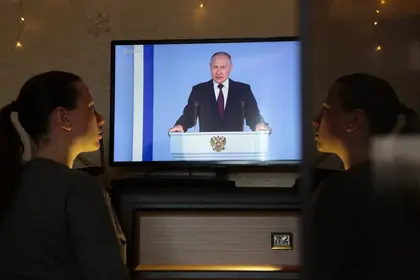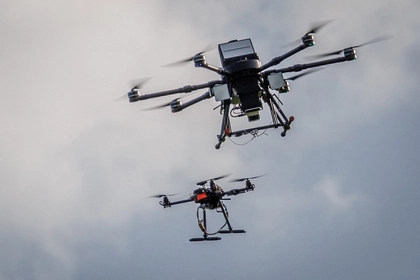Why Vladimir Putin is Obsessed with Control of the Media
In 2013, Russia’s Chief of the General Staff, Valery Gerasimov, gave a speech at the Russian Military Academy of Science on the growing role of non-military instruments for achieving military objectives. In that speech, he asserted that “the role of non-military means of achieving political and strategic goals has grown, and in many cases, they have exceeded the power of force of weapons in their effectiveness.” Gerasimov also wrote that “long-distance, contactless actions against the enemy are becoming the main means of achieving combat and operational goals.”
JOIN US ON TELEGRAM
Follow our coverage of the war on the @Kyivpost_official.
Western intelligence and military services were intrigued by Gerasimov’s characterization of modern warfare, which Western Kremlin expert Mark Galeotti memorably labeled, “the Gerasimov Doctrine”. Five years later, Galeotti publicly apologized for coming up with that name, asserting that this was not, in fact, Russia’s strategic doctrine. Whether or not the Gerasimov Doctrine actually exists as a strategic doctrine in Russia, one thing is clear: Information Warfare definitely does.
How Russia uses the news media, both domestically and to target foreign audiences, is definitely a “non-military means of achieving political and strategic goals” that have “exceeded the power of force of weapons in their effectiveness” in waging “long-distance contactless actions against the enemy”. In his lifetime, Vladimir Putin learned two very painful lessons about the power of the media, and his need to control it. The first was in East Germany, and the second was 90 days after he first became the President of the Russian Federation in 2000.

Russia Tries to Sabotage Moldova’s European Ambitions as It Did for Georgia and Belarus
How Vladimir Putin first learned the power of the media
Vladimir Putin was a 33-year-old KGB major when he arrived in East Germany in 1985. Putin and his wife Lyudmila, a former flight attendant, enjoyed Vladimir’s assignment to Dresden: Their quarters and material quality of life were far superior to the spartan conditions experienced by colleagues living in Moscow and St. Petersburg. While in Dresden, Putin was promoted to lieutenant colonel in the KGB in 1989. Both of Putin’s daughters, Maria and Katerina, were born there. Putin became proficient in German, and later admitted he gained a few pounds due to his love for East German beer. For Vladimir Putin, life in Dresden was an idyllic existence, especially for someone raised in a poor family that had eked out a hardscrabble existence in postwar Leningrad.
While life in Dresden was a dream for the Putin family, it was a stifling nightmare for East Germans who chafed for the kind of freedoms, opportunities, and material benefits enjoyed by relatives in West Germany. One of the main drivers of East German discontent with the communist regime of Erich Honecker was Western media. In the late 1980s, TV broadcasts were still delivered over the air, rather than by cable. Watching West German TV was forbidden in East Germany, and the Stasi, East Germany’s KGB, had special teams that traveled around the country to detect if someone’s TV antenna was pointed towards East Berlin or towards the West. West German news, soap operas, and movies demonstrated on a daily basis the extent to which their own government was lying to them.
Although East German citizens could not travel to the West, it was permissible for them to visit “fraternal socialist countries” like Czechoslovakia and Hungary. In early 1989, though, Hungary demilitarized their border with Austria. Suddenly, East Germans now had a viable means of escape to the West, by traveling through Czechoslovakia to Hungary, and then across the Austro-Hungarian border. A “brain drain” ensued, and East Germany’s days became numbered. By the fall, Monday night demonstrations were taking place in East Germany, with hundreds of thousands gathering to protest. East Germans gathered in East Berlin, in Leipzig, and in Putin’s idyllic Dresden. On 9 November 1989, the Berlin Wall fell. It was the beginning of the end for 40-year-old East Germany. Less than a month later, on 5 December 1989, East German protesters occupied the Dresden headquarters of the hated Stasi. Some of those protesters then headed across the road to the KGB’s headquarters, where Lieutenant Colonel Putin was on duty. Putin later claimed that he stepped outside and warned the demonstrators that his colleagues were authorized to use their weapons to defend themselves. The crowd withdrew.
On 3 October 1990, East and West Germany reunified. Putin and his family returned to Leningrad. In 1991, Putin experienced a second shock when the Soviet Union itself collapsed, an event he later described as “the greatest geopolitical disaster of the 20th century.”
The Kursk disaster
Popular St. Petersburg mayor Anatoly Sobchak took a shine to Vladimir Putin in 1990 and hired him as his advisor on international affairs. In July of 1998, Russian President Yeltsin appointed Putin as director of the Federal Security Service, which had succeeded the Soviet-era KGB. A little over a year later, on 9 August 1999, Yeltsin named Putin as acting prime minister and said he wanted Putin to succeed him. On 31 December 1999, Boris Yeltsin resigned, and Prime Minister Putin succeeded him. Putin’s climb from local apparatchik to Director of the FSB and then Boris Yeltsin’s named successor as president took less than 10 years.
In compliance with Russian law, Acting President Putin ran for election as president in March 2000. Putin won, and was inaugurated on 7 May 2000. When Boris Yeltsin named him as successor, Vladimir Putin was not only an unknown in the West, he was also relatively unknown to citizens within the Russian Federation itself. Just three months after Putin’s inauguration, the Russian ballistic missile submarine Kursk suffered a catastrophic explosion due to a torpedo malfunction and sank. While most of the 188 crew members died instantly, 23 survivors clung to life on the wreck that settled on the seabed. The Russian government initially rebuffed offers of assistance from the U.K. and Norway; by the time Moscow finally granted permission, a team of British and Norwegian divers successfully accessed the vessel but found all the survivors had perished.
On 22 August 2000, Putin traveled to the Kursk’s home port of Vidyayevo to meet for three hours with over 500 relatives of the submarine’s crew. That meeting, broadcast on Russian TV, was anything but pleasant. Family members lashed out at Putin. The still-independent Russian news media eviscerated Putin and his government for its mishandling of the Kursk disaster. One Moscow newspaper derisively called him “Czar Putin” over his perceived failure to accept international assistance. Boris Nemtsov, a Russian parliamentarian who himself had been a former Yeltsin prime minister, said, “My view is that Putin doesn’t like people. Doesn’t feel the tragedy of the people. Doesn’t feel the soul of the people.”
Putin’s suppression of Russia’s independent media
Vladimir Putin seethed with anger at Russian news media characterizations of him, and of his government’s handling of the matter. One journalist who secretly witnessed the tense encounter between Putin and the Kursk crew’s family members reported how Putin had said, “They are liars. The television has people who have been destroying the state for 10 years. They have been thieving money and buying up absolutely everything.” Days after the meeting in Vidyayevo, Putin publicly threatened Boris Berezovsky and Vladimir Gusinsky, owners of two Russian TV channels that had strongly criticized him and his government. It was an ominous development.
The independent Russian media’s reaction to the Kursk disaster showed Putin what needed to be done. In his annual news conference in 2013, he said, “There should be patriotically minded people at the head of state information resources, people who uphold the interests of the Russian Federation. These are state resources. That is the way it is going to be.” In the years since the Kursk disaster, the Russian government has systematically and inexorably taken control of all Russian media. Media owners were either brought in line, driven into exile, or subjected to an endless succession of legal proceedings: Vladimir Gusinky was driven into exile and forced to relinquish his extensive media holdings in Russia. Like Gusinsky, Boris Beresovsky was also forced to leave the country; the UK granted him political asylum in 2003. Boris Nemtsov, however, remained in Russia, serving as the leading voice of Russia’s political opposition. While walking across the Bolshoy Moskvoretsky Bridge in Moscow on 27 February 2015, he was gunned down – in full view of the security cameras mounted on the Kremlin.
The once-independent Russian news media that Vladimir Putin inherited from the Yeltsin regime in 2000 has been thoroughly transformed into a propaganda machine for the Kremlin. All dissenting media voices have been silenced. Most Russians, especially older Russians, get their news from Russian TV. That “news” is consistently aligned with the Kremlin’s position. Not surprisingly, Russian public opinion polls consistently show overwhelming support for Vladimir Putin, and for Russia’s war in Ukraine.
The views expressed in this opinion article are the author’s and not necessarily those of Kyiv Post.
You can also highlight the text and press Ctrl + Enter






